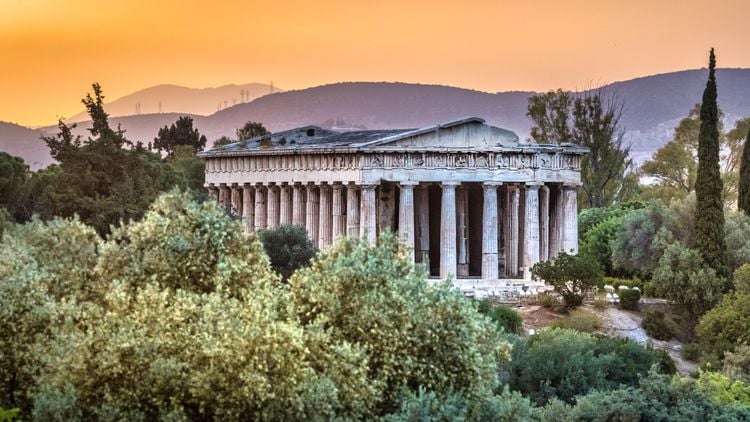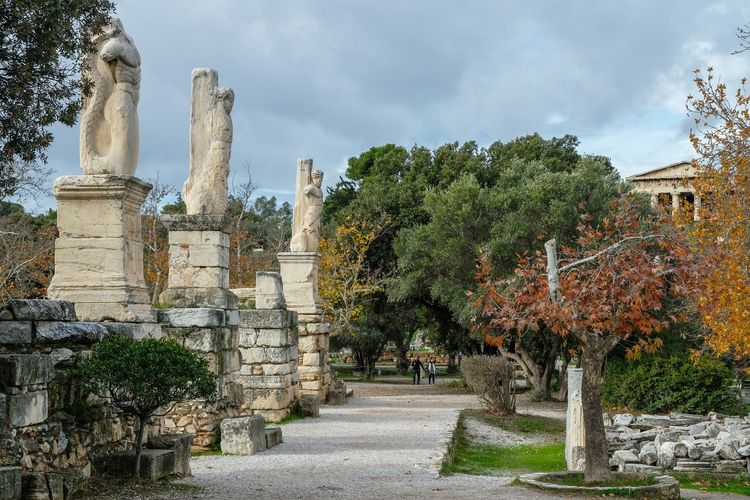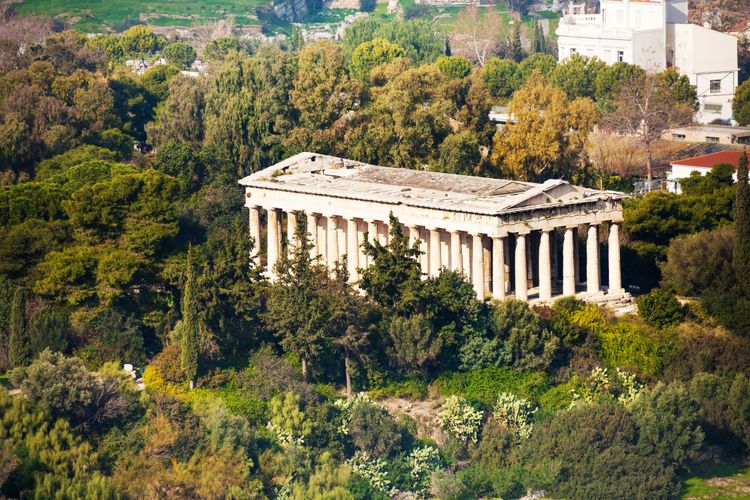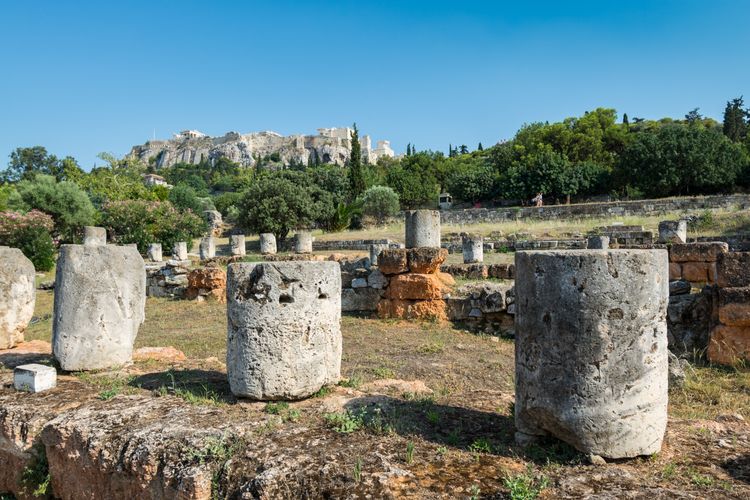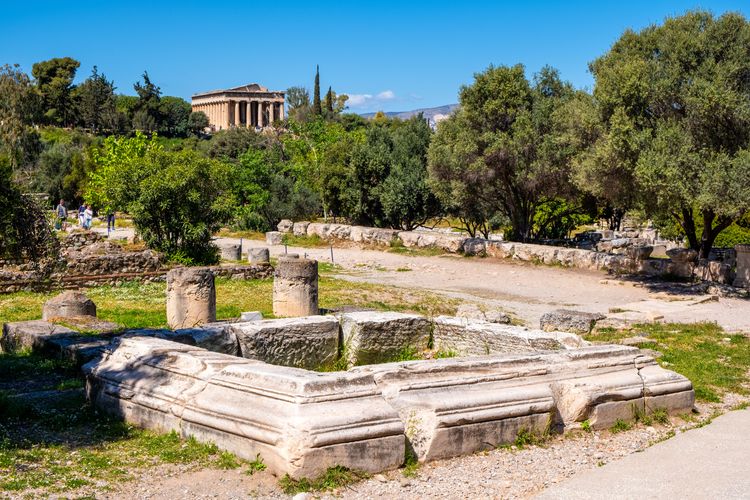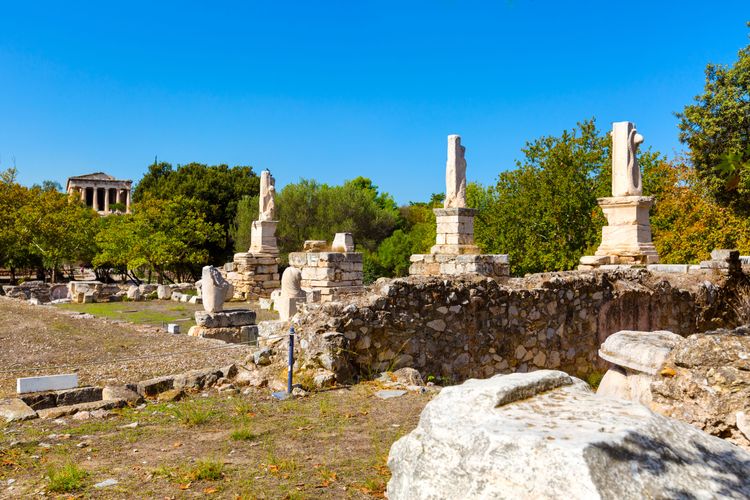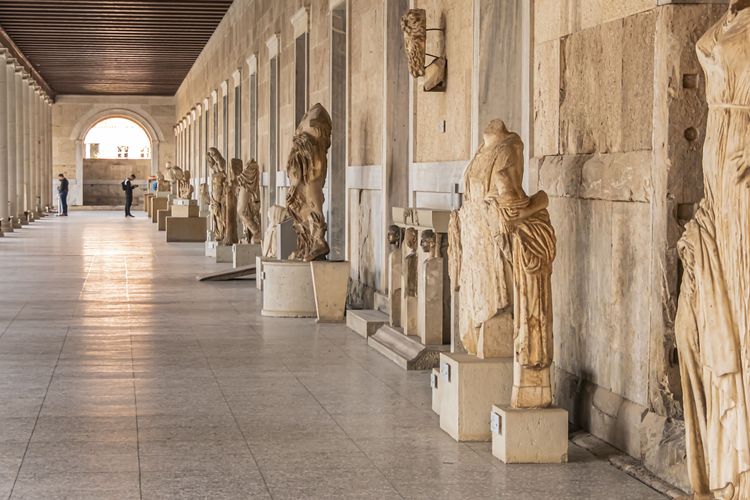The site has been occupied continuously since the city’s inception. As early as the late Neolithic era (around 3000 B.C.), the site was being used as both a residential and burial space. The site became a public place as early as the 6th century B.C. With an ever-changing cultural and political makeup, the Agora took on many different forms before reaching the one we have come to know in the 2nd century B.C. Various building activity was undertaken at the site throughout the centuries, from the Persians in 480 B.C. and the Romans in 89 B.C., to the Slavs in 580 A.D., before being gradually abandoned. The site became active and residential again from the Byzantine period to about the 1830s, before archeological excavations could be conducted. Major archaeological digs were started in the mid 19th century and are ongoing to this day. In the mid-1970s, major restoration works were carried out at the Hephaestion or Temple of Hephaestus.
 Athens
Athens
